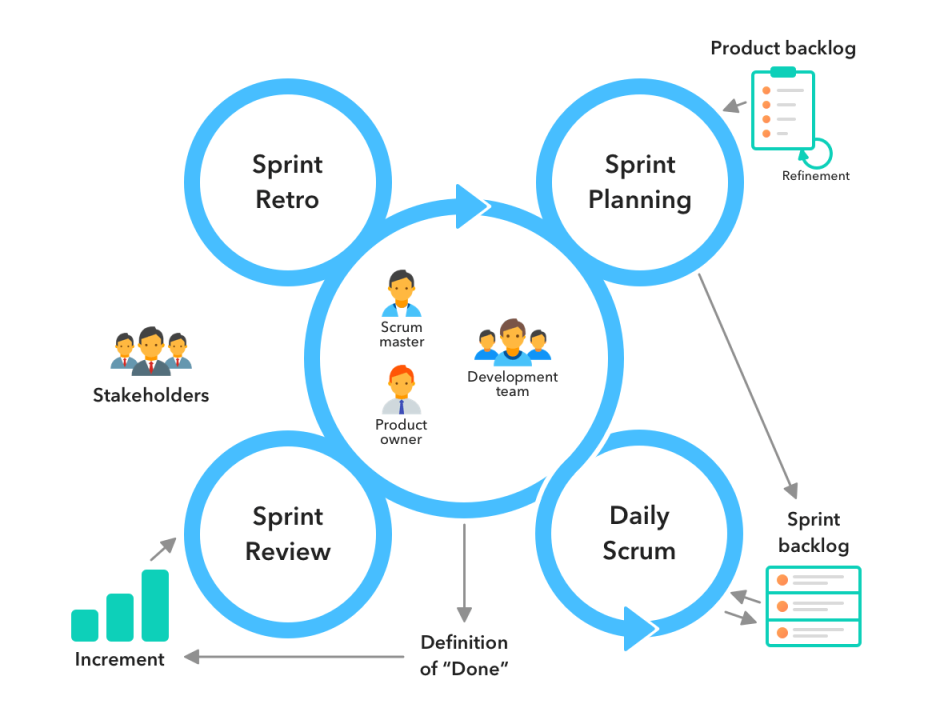In today's quickly evolving work panorama, organizations are significantly recognizing the tremendous associated with agile and even flexible working designs. As traditional nine-to-five structures cave in to be able to more dynamic methods, both employees and even employers are discovering typically the benefits of adapting to alter. The shift towards remote do the job, flexible hours, and agile methodologies permits teams to respond quickly towards the demands of the marketplace while maintaining some sort of healthy work-life harmony. This cultural transformation not only enhances productivity but furthermore fosters innovation and collaboration among various teams.
Embracing agility and even flexibility within the work environment is no more time just a trend; it has become a necessary strategy for getting and retaining best talent. Companies that prioritize these procedures discover that they will create environments of which promote employee well being, enhance job fulfillment, and improve overall performance. As we explore this guideline, we'll explore precisely what agile and versatile working hard really mean, their own key differences, and even how businesses can effectively implement these approaches to survive inside a modern workforce.
Understanding Agile and Flexible Working
Agile and versatile functioning are concepts that will have gained substantial traction in today's workforce, redefining just how organizations approach their operations. Agile operating focuses on iterative processes and adaptability, allowing teams to quickly respond to modifying circumstances and consumer needs. It highlights collaboration, transparency, plus continuous improvement, promoting an environment in which innovation can survive. On the additional hand, flexible working encompasses a wider range of arrangements, these kinds of as remote do the job, variable hours, and alternative workspaces, wedding caterers to the diverse needs of workers and contributing to their overall satisfaction and productivity.
The fact of these operating models lies found in their ability to be able to empower employees in addition to enhance organizational productivity. In an souple work environment, groups ought to experiment plus adapt their strategies as required, ensuring of which they remain competing and responsive. Versatile working, meanwhile, appreciates the importance of work-life balance and even provides employees with the autonomy to develop their schedules in a way that best suits their own personal and specialized lives. Together, these approaches create the dynamic framework that supports diverse work styles and tastes.
Because organizations increasingly acknowledge the value regarding agility and flexibility, they are also realizing the advantages these models take to employee engagement and retention. Agile Working Wells that embrace these kinds of practices often realize that they are even better equipped to entice and retain top rated talent, as they offer you a modern, specially working environment. Comprehending the foundational components of agile and versatile working is important for your business looking in order to thrive within an ever-evolving landscape, since it pieces the stage regarding implementing effective techniques that promote development, collaboration, and innovation.
Advantages and Challenges of Flexible Job
Flexible operate arrangements offer several benefits for both employees and organisations. For employees, the most significant advantages is the improved work-life stability. With the potential to customize their own schedules, individuals will better manage personal responsibilities alongside their professional obligations. https://bynum-hunt-3.technetbloggers.de/taking-on-change-the-potential-future-of-agile-and-flexible-workspaces may lead to increased job pleasure and lower stress levels, ultimately improving overall wellbeing. Organisations also benefit by flexible work by simply fostering a much more interested and motivated labor force, which can lead to higher productivity and even reduced turnover prices.
On the other hand, flexible work can display certain challenges that organizations must understand. One common hurdle is the potential for communication breakdowns as teams adjust to different plans and remote operate settings. Maintaining regular and effective interaction is crucial intended for collaboration and project success. Additionally, several employees may fight with self-discipline within a flexible atmosphere, leading to decreased productivity if not managed properly. Businesses must be proactive in addressing these issues to ensure that flexibility is not going to give up performance.
To effectively control the benefits of flexible work while overcoming its issues, companies need to establish clear plans and support methods. Investing in technological innovation that facilitates conversation and project supervision can help connection gaps and engender collaboration among distant teams. Furthermore, stimulating feedback and constantly evaluating the usefulness of flexible function arrangements can lead to an even more eco friendly and productive function culture. By prioritizing both employee needs and organizational objectives, businesses can cause a great environment where adaptable working thrives.
Implementing Agile Practices in Your own Organization
To successfully employ agile practices in your organization, start by fostering a new culture that embraces change. This ethnic shift requires open communication and a new willingness to conform to new procedures. Encourage team members in order to share feedback on a regular basis and create a new safe environment exactly where they feel strengthened to suggest enhancements. Leadership should model agile behaviors simply by being transparent regarding goals and issues, which helps create trust and lines up everyone toward frequent objectives.
Next, introduce tools and frameworks of which support agile techniques. Consider adopting procedures like daily stand-up meetings, sprint setting up, and retrospectives. These types of strategies facilitate effort and ensure that everyone stays aligned on priorities. In addition, utilizing technology can enhance these practices; tools such as project management software, interaction platforms, and venture apps can reduces costs of workflows and maintain remote teams connected.
Finally, ensure that training and even resources are accessible to equip the employees with the particular necessary skills regarding agile working. Offer you workshops or training sessions that include agile principles and practices, as effectively as the specific tools your firm will be using. This investment inside of education not only helps employees feel competent and assured in their tasks but also drives engagement and development through the organization. By taking actions, a person will lay a robust foundation for snello practices and promote a more flexible and productive function environment.

